This may lead us to many questions. Some of which are:
1. What does training in-season actually do?
2. What type of training should I do?
3. What if my schedule is undefined, how should I train then?
4. Will this make me more sore than I already am?
5. When is the best time to train?
Etc.
I have found that sports that are termed as "year round" sports are the sports that athletes have the lowest training participation. These sports like soccer, lacrosse and basketball, to name a few, are sports that athletes have unlimited access to play. They can go to any field, court or open lot and play a pick up game or work on some sport specific skill. In addition to their year round label, they also play TONS of games in virtually every season of the year. There schedules may have them playing 3 games one week and as many as 5 games the next. Sometimes they even play "double headers" engaging in multiple games in one day. These sports are really demanding on the athletes body and any moment to eat, rest & recover certainly should be maximized.
Then you have the controlled sports that don't have the means for athletes to play them year round. These sports require a certain amount of equipment or certain conditions that make it hard to play "pick up". Football, Ice Hockey & certain motor cross sports sports come to mind.
In either case the need for a solid training program is imperative! Just like a car needs its oil changed, maintenance checks and tune ups, athletes need in-season training. In this part of the article we'll discuss the philosophies on what in-season training should be built on.
Training in-season should be built on 4 things:
1. Injury prevention. Many athletes, especially those involved in contact sports, have to decrease their injury potential 1st and foremost. What good is any training program if you cant play? This calls for a lot of what is termed in the fitness community as pre-hab. This simply put is the idea that one may prevent injuries before they even happen with quality exercises designed to stabilize joint structure and increase sound movement patterns.
2. Muscle regeneration. Muscle regeneration is the idea that athletes need to be brought back to 100% before the next competition. I am not sure people realize how important muscle regeneration actually is. When an athlete is young they may have the ability to play 3 games in 3 days and have little to no carry over at all. As we age our ability to properly recover decreases. This IS trainable! The ability to be at 100% for every game is the biggest commodity for an athlete. Athletes need to know that they can train themselves to recover. As they progress through their season, their bodies will respond to the recovery methods. When this happens they can enjoy sustained success without production falling off late in the year. We utilize stretch ropes, foam rolls for myofascial tissue release and even yoga & ice to help athletes bring there bodies back to game condition.
3. Muscle strength. Yup, I said it. I want athletes to get stronger DURING THE SEASON. Now, when I say that I don't mean I want to put them under a ton of stress and certainly not under maximal weights. I am just addressing that fact that athletes can add to their strength gains if they train properly. Athletes should lift lighter weights for lower volumes than off-season training programs while keeping the intensity high. Effort should always remain high! They should also engage in a lot of body weight movements. Exercises like push-ups, dips, pull-ups, sit-ups and body squats are excellent for keeping strong and not adding too much stress on the nervous system.
4. Nutrition & Rest. This is just as important as the rest of the items I've discussed. Athletes need to consider their eating habits training. Likewise they should also treat their resting habits as training. This approach will almost assure any athlete that they are eating correctly and sleeping enough. When these two elements are considered important, extraordinary results are achieved.
Athletes who engage in year round sports have the challenge of trying to develop their bodies while they are constantly breaking them down. All of your training is in-season. This is why I recommend that all athletes take seasonal breaks from their sport to allow time for proper training and to restore their bodies. I feel that your training should be done 2-3 days prior to competition if at all possible. Remember that relative body strength and muscle restoration will take you a long way. Get your training in every week without fail. When you have additional time or a down week, train harder and rest as much as possible. You should also consider training around the same time of day as your practices and competitions. This will keep your body regulated and hopefully allow your nutrition to remain relatively simple. You must consider the work it takes to be the best not only happens on the field, but off of it too.
Athletes who have followed a full off-season training program need to maintain their gains in-season. Your programs should be very high in intensity and a bit shorter in duration. Restorative work is always great but the main objective is to keep from breaking down and getting injured. Center your program around the basics. Your program does not need to be fancy, just stick to the basic structural exercises (squats, bench press & pull-ups) and get out of there. Your performance will benefit from the training aiding against muscle breakdown and extreme weight loss.
I feel the need to address two common issues.
1) Some athletes spend too much time in the weight room. They cannot differentiate between off-season training and in-season. Well, don't spend a lot of extra time in the weight room. Workouts should be closer to 45 min long and medium to high intensity. The object is to push yourself. Once the task is completed, go home. Staying for extra bicep work is not necessary at this point. Besides, spring break is still a few months away anyway.
2) If you aren't playing much you should be training a bit more. Although you practice and are involved in the sport itself, you may not be taking full advantage of your ability to get better. Add an extra day of training to your regimen. This will keep you ready late in the season should injuries occur and even allow you to get the jump start on next year.
There is much more to consider when training in-season. In our next installment we'll discuss typical mistakes with in-season training and sample training programs to help assist you in your knowledge about the truth on in-season training. Thanks!
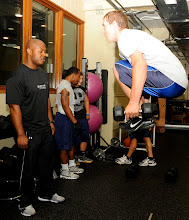


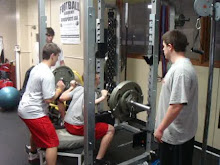
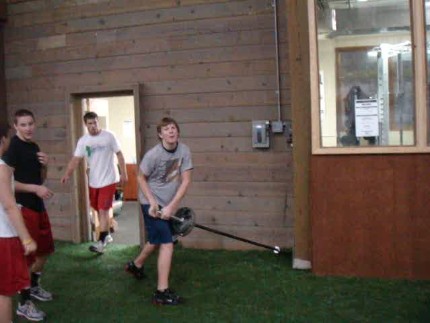

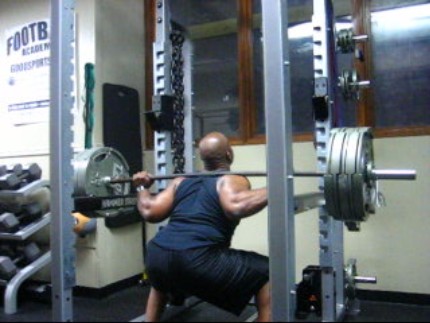
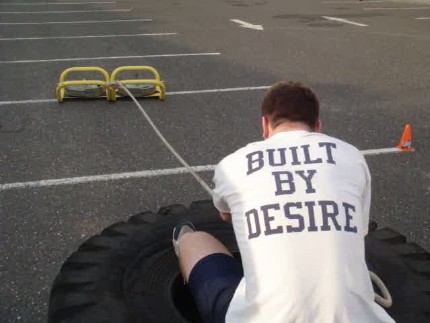

No comments:
Post a Comment